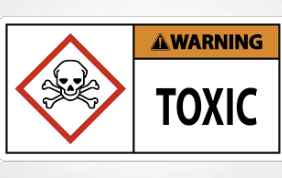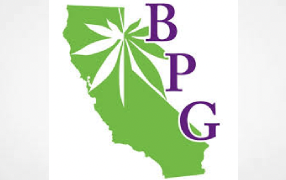Thanks to Lex Pelger’s Newsletter for the tip
Harm Reduction Journal volume 21, Article number: 127 (2024)
Abstract
Background
Since late 2019, fortification of ‘regular’ cannabis plant material with synthetic cannabinoid receptor agonists (SCRAs) has become a notable phenomenon on the drug market. As many SCRAs pose a higher health risk than genuine cannabis, recognizing SCRA-adulterated cannabis is important from a harm reduction perspective. However, this is not always an easy task as adulterated cannabis may only be distinguished from genuine cannabis by dedicated, often expensive and time-consuming analytical techniques. In addition, the dynamic nature of the SCRA market renders identification of fortified samples a challenging task. Therefore, we established and applied an in vitro cannabinoid receptor 1 (CB1) activity-based procedure to screen plant material for the presence of SCRAs.
Methods
The assay principle relies on the functional complementation of a split-nanoluciferase following recruitment of β-arrestin 2 to activated CB1. A straightforward sample preparation, encompassing methanolic extraction and dilution, was optimized for plant matrices, including cannabis, spiked with 5 µg/mg of the SCRA CP55,940.
Results
The bioassay successfully detected all samples of a set (n = 24) of analytically confirmed authentic Spice products, additionally providing relevant information on the ‘strength’ of a preparation and whether different samples may have originated from separate batches or possibly the same production batch. Finally, the methodology was applied to assess the occurrence of SCRA adulteration in a large set (n = 252) of herbal materials collected at an international dance festival. This did not reveal any positives, i.e. there were no samples that yielded a relevant CB1 activation.
Conclusion
In summary, we established SCRA screening of herbal materials as a new application for the activity-based CB1 bioassay. The simplicity of the sample preparation, the rapid results and the universal character of the bioassay render it an effective and future-proof tool for evaluating herbal materials for the presence of SCRAs, which is relevant in the context of harm reduction.
Introduction
Synthetic cannabinoid receptor agonists (SCRAs) comprise a substantial portion of the new psychoactive substances (NPS) monitored by the EMCDDA (European Monitoring Centre for Drugs and Drug Addiction). NPS are substances designed to replicate the experiences induced by conventional recreational drugs, while possessing altered chemical structures to evade legislation and/or detection. Specifically for SCRAs, the psychoactive effects of Δ9-tetrahydrocannabinol (THC), the main psychoactive constituent of Cannabis sativa, are mimicked [1]. SCRAs were initially synthesized to explore the endogenous cannabinergic pathways and to serve as pharmaceutical agents for conditions such as pain, anorexia, glaucoma, muscle spasms and wasting syndrome. Their main mechanism of action relies on their interaction with the cannabinoid receptor 1 and 2 (CB1 and CB2) [2]. The activation of CB1, mostly present in the central nervous system, attributes to their pharmacological similarity to THC. Besides producing the desired THC-like effects, such as euphoria and relaxation, the potential ‘legality’ of these substance makes them an interesting alternative for cannabis in countries where its usage is prohibited [2,3,4].
In comparison to THC, SCRAs often have a higher potency and efficacy at CB1 [5], and may cause serious adverse effects, including agitation [6], cardiovascular problems [7], psychological disorders [8, 9], nausea and vomiting, depressed breathing, muscle twitches, acute renal failure, suicidal ideation and cognitive impairment [10, 11]. The relevance and associated risks have led to the classification of many SCRAs as controlled substances, with the legal status varying by country. They may be nominally listed in controlled substance schedules or may be regulated via generic structure classification, covering substances with a similar chemical framework, aiming at a more future-proof legislation [12, 13]. Because of these regulatory efforts, clandestine and other labs continue to introduce (subtle) structural alterations, resulting in a rapid turnover of the NPS market. The resulting broad structural variety has rendered routine structure-based immunological drug screens ineffective, as these lack adequate cross-reactivity and sensitivity in detecting these compounds in biological matrices or confiscated materials [2, 14]. Rapid, effective and future-proof screening methods are required to address this challenge. In particular, ‘untargeted’ screening strategies are considered interesting, as these do not necessarily rely on certified reference materials or continuously updated mass spectral or other libraries. High resolution mass spectrometry (HRMS) serves as the gold standard for NPS detection [15]. However, this analytical method is costly and time-consuming, limiting its routine implementation for high-throughput screening and in resource-limited settings [14, 16,17,18].
SCRAs are available in several forms, including as herbal preparations or laced tobacco for smoking purposes [3]. These preparations are typically the result of spraying or soaking plant material with SCRAs, dissolved in an organic solvent, followed by drying and crushing [2, 19,20,21]. Since 2004, Europe has witnessed the emergence of these preparations, often referred to as ‘Spice’ or ‘legal highs’, which are sold online or via specialized shops in colourful packages [12].
Low-THC cannabis is defined by the EMCDDA as “a product being or containing cannabis herb, resin, extracts or oils that claim or appear to have a very low percentage of THC and which would be unlikely to cause intoxication” [22]. Since 2019, and initially observed in Switzerland, a new SCRA-related phenomenon has emerged, in which low-THC cannabis is adulterated with SCRAs [23,24,25]. The rationale behind the adulteration of industrial (or low-THC) hemp seems evident from a manufacturer’s standpoint, given the lower cost associated with low-THC hemp cultivation and the visually similar appearance. Because of this similar appearance, people who use traditional cannabis may believe that they are buying and consuming authentic cannabis. This combination of the consumer’s unwitting use of SCRAs, along with the SCRAs’ heightened potency and toxicity compared to THC, increases the risk of (severe) intoxications and unanticipated health effects [2, 3, 5, 26, 27]. The need for a better understanding of this phenomenon was also highlighted by the EMCDDA, which expressed concerns regarding public health and consumer protection. In this context, from a harm reduction perspective it is relevant to be able to distinguish between ‘genuine’ cannabis and SCRA-adulterated cannabis, given the increased health risks posed by the latter.
Starting from a previously described in vitro activity-based CB1 assay, this study reports on a novel application of this assay to screen for cannabinoid activity in herbal products. The ‘untargeted’ activity-based methodology utilizes a CB1-β-arrestin 2 (βarr2) recruitment assay based on functional complementation of a split-nanoluciferase (NanoBiT®; NanoLuc® Binary Technology), facilitating real-time monitoring of protein interactions in living cells [28, 29]. Although there are currently several assays for measuring CB1 activation, the CB1-βarr2 recruitment assay offers several advantages such as its simplicity, real-time monitoring, and the absence of radioactivity. Moreover, it has proven to be a sensitive and selective system, with the measurement of a receptor-proximal event as a read-out (βarr2 recruitment to activated CB1), minimizing false positive scoring [30, 31]. The methodology was optimized using a diverse set of CP55,940-spiked plant matrices and suitability was demonstrated using a set of analytically confirmed authentic Spice products. The methodology was subsequently applied to screen an extensive set of cannabis/herbal products (n = 252), collected during the summer of 2022 at an international dance festival, to evaluate the prevalence of SCRA-laced products/adulterated cannabis.


















